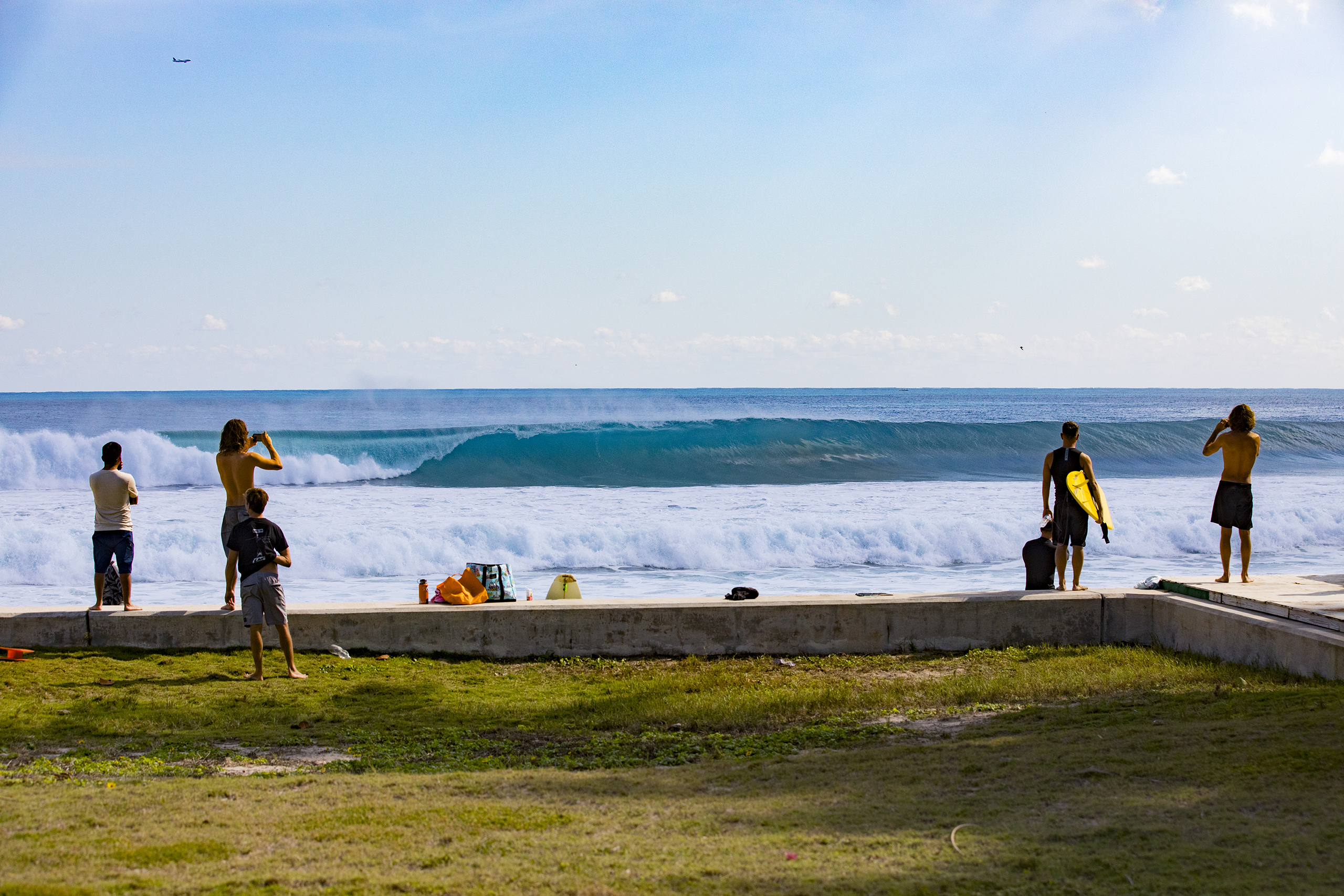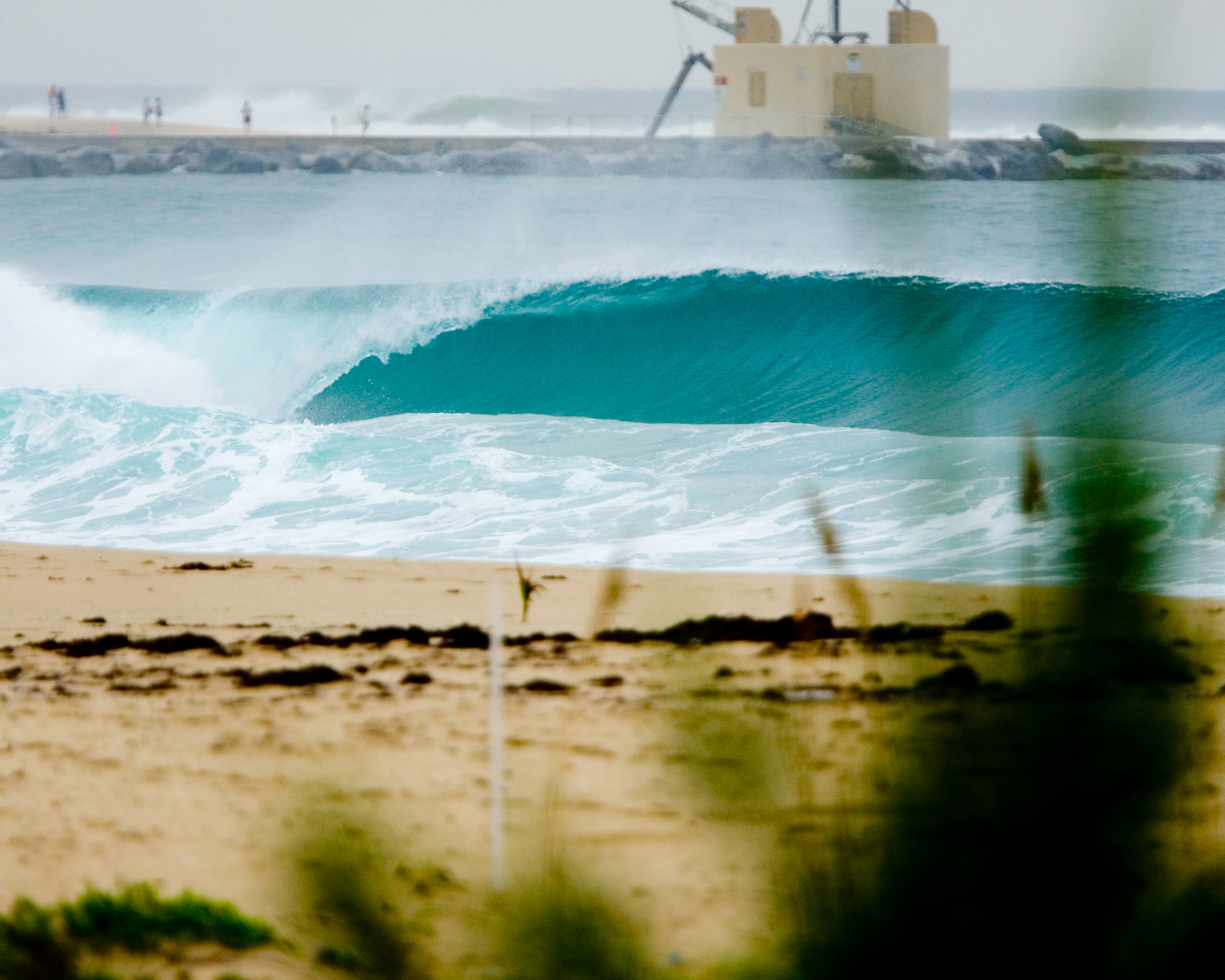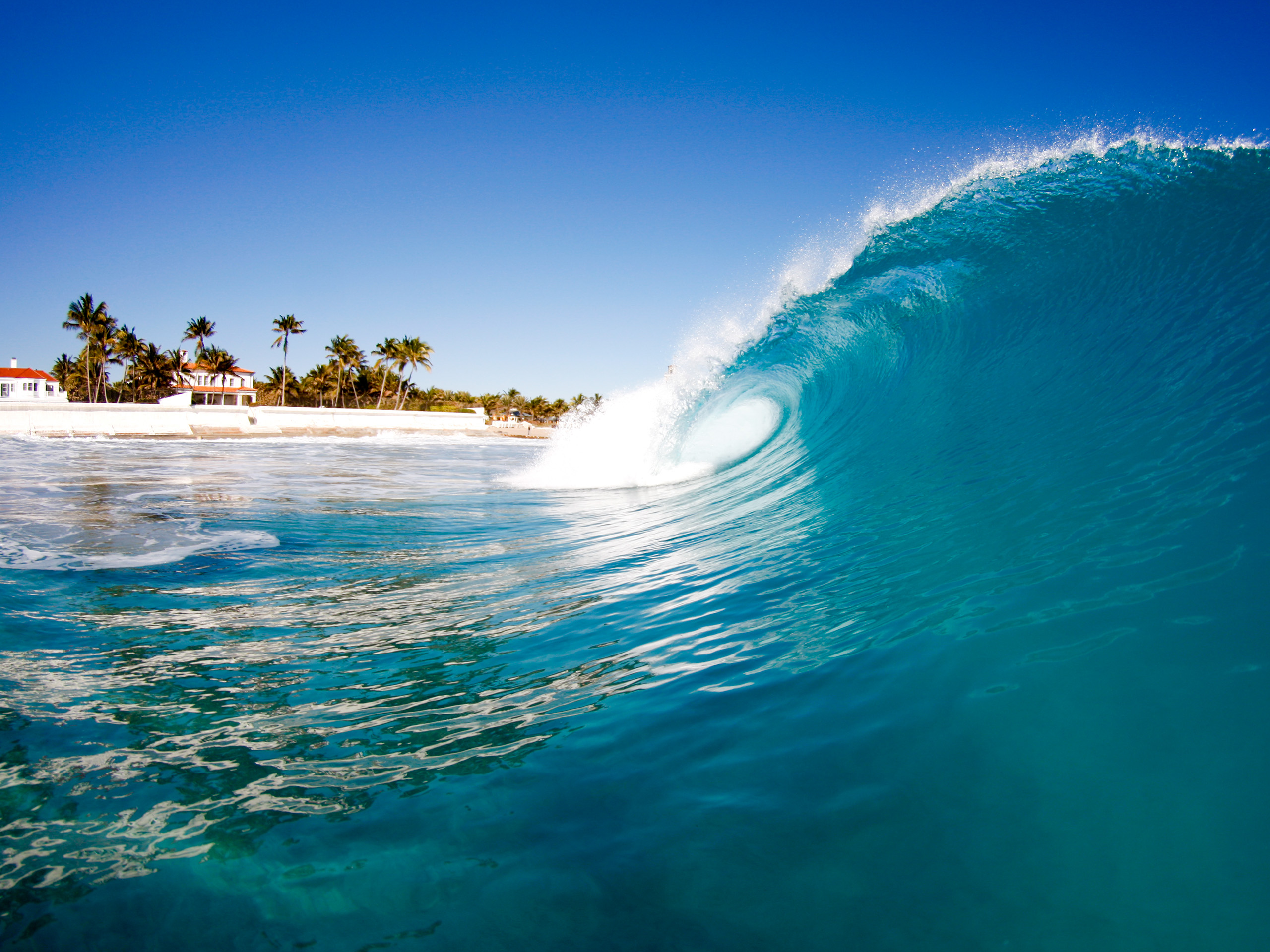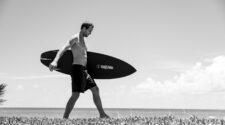When the Wave Breaks Here, Don’t be There
Photos by Ben Hicks
There are a few factors that go into crafting the perfect swell. If you’re an experienced surfer, you probably already have a grasp on what those factors are and can gloss over this science lesson. But, if you’re newer to the sport or hoping to take a peek into an experienced surfer/meteorologist’s mind, we’ve done the hard work of securing James Wieland for you. James is a WPTV Meteorologist, also known as the “Surf n’ Weatherman.” He shared with us his process and how he determines where and when a swell will hit based on the factors below.
WAVE MAKERS (WIND AND DURATION)
The main things I look for when forecasting the surf conditions in our area are, first, if there are any wave makers in our swell window. I look to see if there’s any strong winds over a decent sized area in the Atlantic that are pointed at us. This area is called “fetch” and it is the main ingredient to swell generation. The second ingredient is time, so that wind needs to blow over the water for a decent amount of time to build the waves up and produce a swell. Once I see a wave maker for us out there, I can figure out (using the model data) when the swell will hit.
SOUTH FLORIDA SWELL WINDOW
A swell window refers to the space where swell can be made and hit your beach. The South Florida swell window is rather small and gets smaller the farther you go south, thanks to the Bahamas blocking most of the swell energy, so only north swells make it down. The farther north you go in the state it opens up to east, and even southeast, swells from Central Florida and the Cape northward.
TIME OF YEAR
The fall, winter, and spring produce powerful low-pressure systems — and even sometimes the edge of high pressure — that will give us the fetch over a period of time in our swell window to send some swell our way. Since big winter lows don’t move off the coast in the summer, the summer is usually flat, aside from a stray hurricane that may get close enough to send some swell down here. The best location for that, though, is Central Florida northward since they are out of the Bahamas’ shadow for east and southeast swells.
LOCAL WEATHER PATTERNS
Once I know the days it will hit I can look at our local weather patterns for those days to see if the wind will be offshore producing clean waves, or onshore producing choppy waves, and maybe the timing of when the wind will turn. Finally, as the day gets closer, I look at the tides to try to decide the right spot to hit at the right time.
We also get a lot of wind chop, which is just onshore, windy, drifty, dumpy, not-so-pretty type waves, but we all love it, and it gives us time in the water between swells. For that I just look for 20kt or more wind with some east in it (NE-E-SE).
REFRACTION SWELLS
We also get a somewhat rare, not completely understood phenomenon that some people call a “refraction swell.” It only appears in South Florida (Palm Beach County southward) when we get a strong northwest or west wind after a frontal passage.
Nobody knows for sure how or why it happens as it’s not been scientifically studied thoroughly. We just know it happens most (not all) of the time with a strong northwest, west northwest, or even west wind over Florida and the Carolinas for at least 12 hours, like after a strong cold front. The difficulty is the swell is rather elusive, sometimes it appears at one break, while a couple miles down the road it’s flat, then the next county down it’s firing at one or two spots, then flat. Or sometimes Miami is head high, and Palm Beach doesn’t get it at all. Or it appears for a few hours then it’s gone. Tough to explain all those things happening all at once, and tough to forecast!
There are many theories behind the mechanics of the swell, but nothing is proven. The original thinking was — and why it’s called ‘refraction’ swell — is that the waves bend back or refract back toward the coast. This probably isn’t what’s happening as there are no reefs or shoals to refract the waves back a whole 90 to some- times 180 degrees. I just go with that name still because it’s the most common name everyone understands and, frankly, we don’t have an exact explanation to call it something else.
Other theories involve the proximity of the Bahamas, or the swell bouncing off the Gulf Stream, since the Gulf Stream can be 6 feet or higher in the middle. If that were the case it would be a reflection swell, or rebound swell. Some people think there must be some fetch pointed south at us, but I’ve seen first-hand this to be false. I have many examples of weather maps I’ve kept over the years that show nothing but northwest wind, and it still happens.
I do have a theory that involves a few different processes that all come together to create the “magic,” as I call it. I doubt it’s just one magic thing, and probably a few things coming all together. I’ve been working on it for a couple years, gathering maps and data every winter. I plan on publishing it online hopefully before the year is up on wptv.com/surfing. I’ve done a talk or two at some events about it and it seemed to go over well. Again, it’s not fact, it’s just a few theories like the rest. We won’t know 100% what’s going on until someone can study it in detail by deploying many buoys and weather instruments all over the southeast and analyzing years of data that comes from it.
Even though we have many new tools and technology helping us, predicting the future is hard. The earth’s atmosphere is so complicated and dynamic that I don’t think we will ever get every little nuance to have a perfect forecast every time. But that’s the fun in it, too. I like to figure out how things work, and figuring out what’s going on, what may happen, and then seeing it happen…well, that’s a great feeling! It keeps me motivated. It’s kind of like winning the big game after putting in all the work, but, at the same time, busting a forecast is like getting beat (by Mother Nature), and nobody likes to lose a big game! The ocean is fascinating and I’ll always keep coming back for more.
















